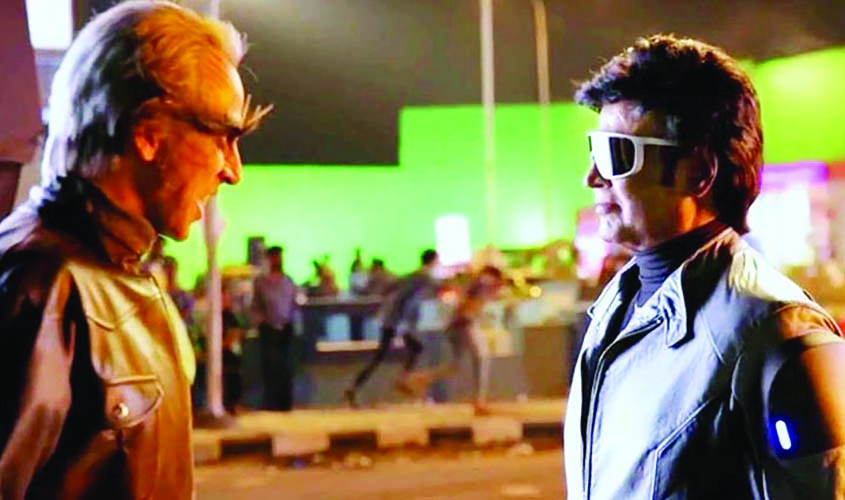During an early scene in Shankar’s 2.0, the much-awaited sequel to his 2010 blockbuster Enthiran, an old man standing in a long queue likens the cellphone to his querulous wife. “It’s difficult to live with her but I also can’t live without her. The same is true of the cellphone,” he says. Don’t we all sometimes feel that if it wouldn’t have been for cellphones our lives would be free from a lot of compulsions? And yet our lives have become so heavily dependent on them that we just can’t imagine living without them. 2.0 raises some serious questions regarding the use of cellphones and the harmful radiations emitted by cellphone towers. Several newspaper reports have highlighted the harmful effects of radiation emanating from cellphone towers on the bird population. These reports have been cited at the beginning of 2.0 as the source of reference along with the disclaimer that the film is a work of fiction. Interestingly, the Cellular Operators Association of India (COAI) has demanded for a ban on Shankar’s film fearing that it may prove detrimental to the telecom business.
2.0 has come more than eight years after the release of Enthiran. A lot has changed in Indian cinema in the recent years. The success of the Baahubali: The Beginning (2015) has perpetuated a new trend of big event films akin to the blockbusters made by Hollywood. In fact, 2.0 is the biggest film to hit the Indian theatres since Baahubali 2: The Conclusion (2017). And there is no denying that Shankar’s latest offering takes a giant leap in terms of visual brilliance. Those who think Hollywood is untouchable when it comes to visual effects, 2.0 is here to prove them all wrong. It is now time for Indian cinema to compete with the best in the world. Recently during
For 2.0, Resul Pookutty, the Oscar-winning sound mixer of Slumdog Millionaire, has employed a new sound technology called 4DSRL, a result of two years of research and work, which he describes as the sound equivalent of the 3D image. In other words, 2.0 is not only groundbreaking in terms of visual brilliance but it is also a pioneer as far as sound is concerned. Yes, the film’s screenplay is rather predictable at places and it seems to be trying too hard to woo the fans of Rajinikanth. But there is no denying that 2.0 is a critical film for Indian cinema. For, its fate would decide if we really want to compete with the best of Hollywood or are we willing to concede our territories to Hollywood films which have been eating into the Indian markets more aggressively than ever in the recent years.

